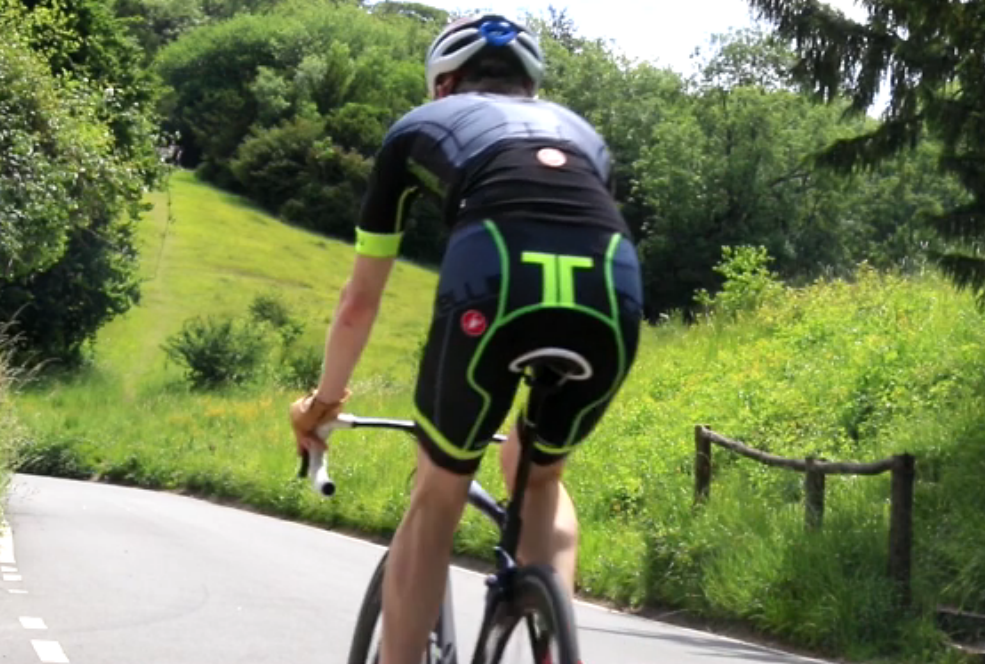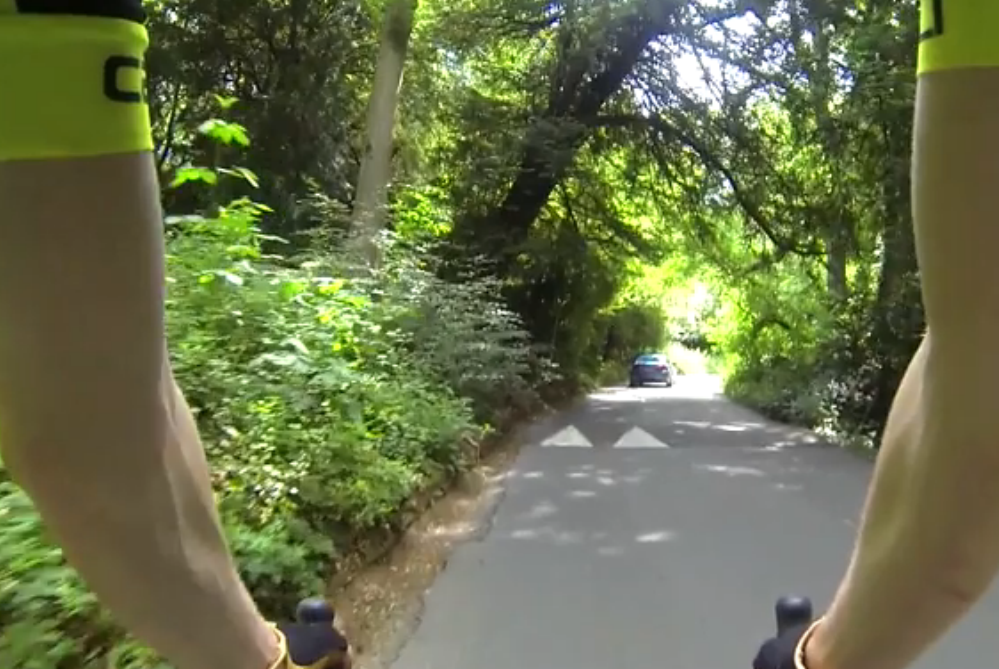Which climbs faster – an aero bike or lightweight bike? (video)
Our experiment sets out to discover how much the weight penalty of an aero bike will hold you back on a typical UK climb

Aero road bikes are primarily built for straight-line speed on flat terrain. That's fine, but when the road starts to go up, the gravity-defying benefits of the lightweight road bike begin to fight back against the wind-cheating attributes of the aero. So we set up an experiment on the iconic Box Hill climb in Surrey to find out which is faster uphill: an aero road bike or a lightweight road bike?
>>> On the flat, how much faster is an aero bike?
Which bike is best for you?
When looking to buy a new bike, in addition to cost, there are several factors most people consider. Depending on what kind of riding you are looking to do, the order of priority will change, but the main considerations are:
- how fast/aero is the bike,
- how light is the bike, and
- how comfortable is the bike.
Generally aero road bikes have a more aggressive position and weigh more than a lightweight road bike. Aerodynamic tube shapes can affect stiffness and comfort too, with aero bikes having a reputation for a harsh ride.
Over recent years, as aero road bikes have become more prominent and refined, they carry with them fewer disadvantages. This is reflected in the pro peloton, where more and more riders are using aero road bikes on all but the most extreme parcours, such as Paris Roubaix and the hilliest of Grand Tour stages.
Going uphill

In reality, whatever ride you do it’ll involve some uphill sections. So practically, if you’re thinking of making an upgrade to your current bike, a strong consideration will be how well the bike climbs.
>>> Best cheap bikes ridden and tested
The latest race content, interviews, features, reviews and expert buying guides, direct to your inbox!
Aerodynamics are still important when going uphill, but obviously weight and gravity becomes more of a factor. The main objection raised by people who are anti aero road bikes is that any aero benefits are negated when climbing.
The Bikes
The aero road bike used for this test is the fabled Cervelo S5. The S5 is considered to be amongst the most aerodynamic and fastest aero road bikes commercially available. Even before riding it, it looks fast with its aero road bars, Hed Jet 6 wheels, aero tube profiles and Shimano Dura Ace Di2 groupset. Importantly for our test, the S5 came in at 7.2kg.
The lightweight bike of choice is the Focus Izalco Max. This is the same bike as ridden by the AG2R La Mondiale WorldTour team. As you would expect for a top-end race bike it comes equipped with Dura Ace Di2. The sought after groupset is complemented by a pair of the lightweight Mavic Ksyrium R-Sys wheels. The Focus, with its classic round tube profiles, came in on our scales at a svelte 6.4 kgs.
In short, the Cervelo S5 weighed almost one kg more than the Focus Izalco max.
The location

To undertake the test we travelled to Box Hill in Surrey. We chose Box Hill for several reasons:
- firstly, it is a very popular climb amongst cyclists following the 2012 Olympics when the pros rode it nine times
- the gradient is a fairly consistent five per cent
- lastly, it is about 2.5km long. For most UK riders this is the kind of hill we’ll ride week in week out, rather than a 30-minute to one-hour col on the continent
>>> How to be more aero on your road bike (video)
Test procedure
To carry out the test the same rider rode up Box hill a total of four times, twice on each bike. On each bike the rider rode at 200 watts and then 300 watts respectively. We chose these wattages because we felt that 200 watts represents a power output sustainable by a decent club or sportive rider, and that 300 watts is typical of a time trialist or racer. As a point of reference our test rider was 69kg.
To make the test as reliable as possible:
- the two bikes were set up with the same position, to avoid the aero road bike having a particularly low front end, for example
- The rider remained seated with his hands on the hoods, and
- The rider rode at the set constant wattages we mentioned.
The results
A few caveats before we get to the results. We are aware this is not the most scientific experiment, since being out on the open road there are several variables that we couldn't control. However, it was a still day at Box Hill and on all the test runs the rider had a clean ride, i.e. not slowed down or aided by traffic.
To measure the rider’s power on both bikes we used Garmin Vector pedals and a Garmin Edge 1000 head unit. We did this for consistency and since the Vectors can be easily switched between bikes. Further, to ensure accuracy, we used a torque wrench to tighten the pedals to 25 lbs/ft, whereupon they were calibrated using the Garmin Edge 1000.

200 Watts
Cervelo S5 (aero): 9 mins 24 secs; 9.6mph or 15kph
Focus Izalco Max (lightweight): 9 mins 6 secs; 9.9mph or 16kph
The Cervelo S5 was 18 seconds slower.
300 Watts
Cervelo S5 (aero): 6 mins 50 secs; 13.2 mph or 21.2 kph
Focus Izalco Max (lightweight): 6 min 43 secs; 13.4mph or 21.6 kph
The Cervelo S5 was seven seconds slower.
In other words, travelling at 200 watts and below ten miles per hour the lightweight Focus Izalco Max was substantially quicker. Eighteen seconds is a significant advantage over a climb that takes just over nine minutes. The speed difference was 1kph.
Interestingly, when riding at 300 watts and travelling at well over ten miles an hour, the time gap was slender, only seven seconds. and, crucially, the speed difference was only 0.4kph.
What does this tell us?
The benefits of an aero bike do not really start to kick in until you are travelling over 10 miles per hour. If you typically travel below 10mph (16kph) or the climb is particularly steep, a lightweight road bike will be faster, whereas if you frequently ride over 10mph on climbs or if the climb has a gradient of five percent or less, an aero road bike won't cost you too much time — and will definitely make it back on the flat or the descent.
>>> The lightest production bike in the world (Video)
Therefore, the right bike for you will depend largely on how strong a rider you are, or the type of climbs you usually ride.
For this test we have focused on have an aero road bike set up against a lightweight road bike, so we have not used aero wheels on the standard road bike. We would expect a lightweight road bike with aero wheels to come out between the two bike set ups we tested on Box Hill, so that could be a good compromise.
A final thought regards professionals and the UCI weight limit of 6.8kg. In many cases team mechanics can build aero bikes, complete with power meters, bang on the 6.8kg weight limit, whereas they often have to add weight to super light frames such as the Focus Izalco Max and Merida Scultura to get them up to the said limit. For a professional, considering the aero benefits and that the bikes could in the end weigh the same amount, it's no surprise that the pros are choosing aero bikes.